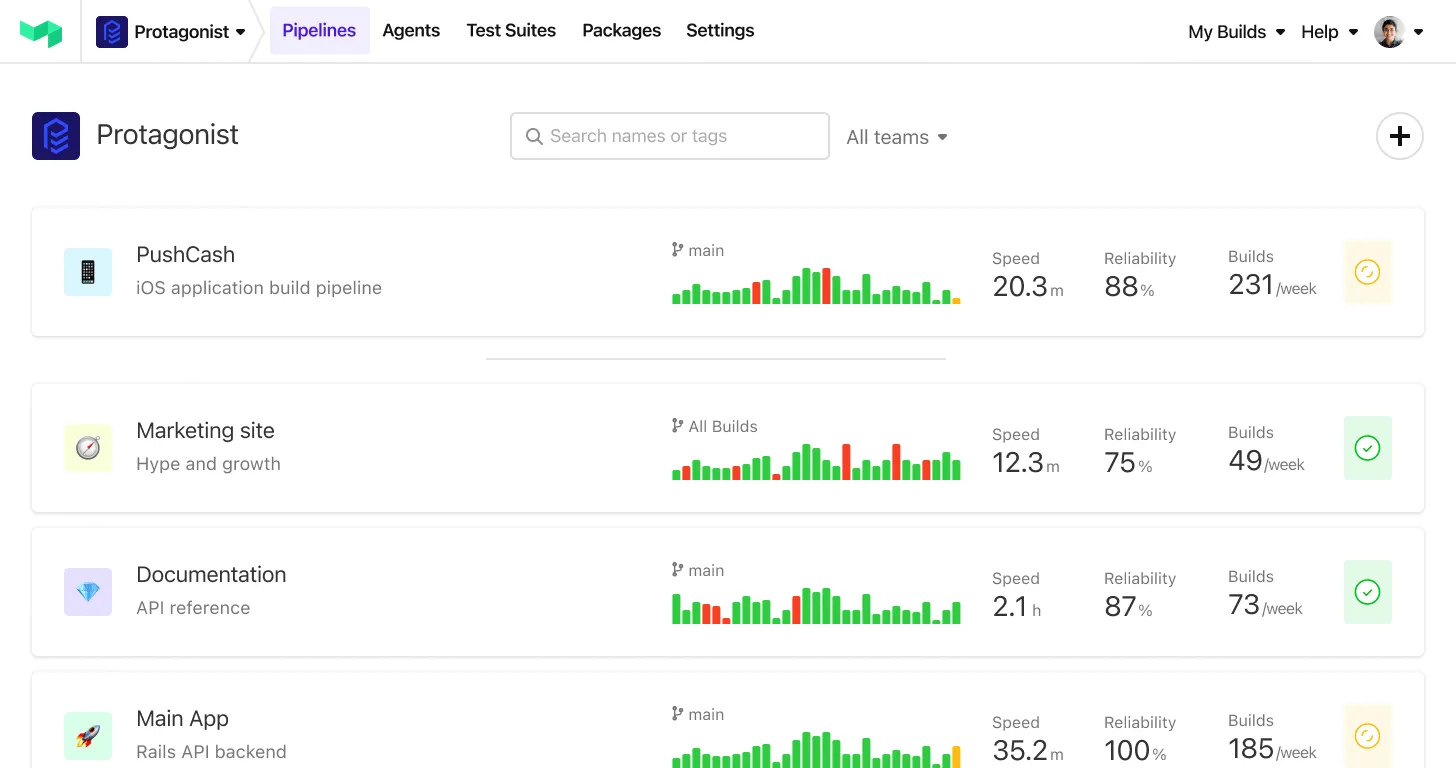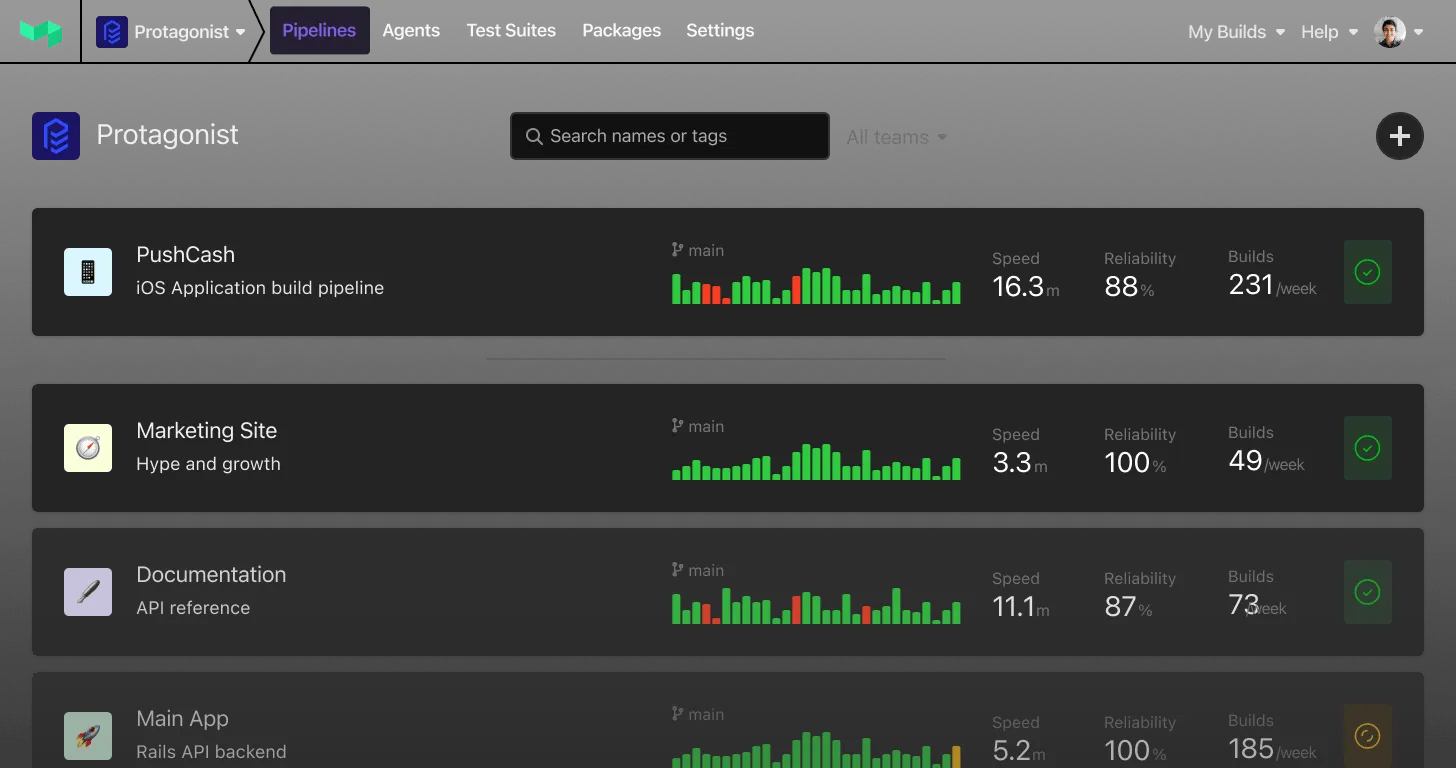Performance and Scalability
When evaluating build tools for large-scale development, performance characteristics become a critical differentiator. Both tools approach scalability from different angles, with distinct advantages depending on project size and complexity.
Bazel
Bazel excels in build performance for large projects, with companies reporting 5-10x improvements in CI build times after migration. Its fine-grained caching and parallel execution capabilities shine in monorepo environments. The tool's analysis phase, while adding initial overhead, enables sophisticated optimizations that pay dividends at scale.
Maven
Maven, while slower for large builds, provides predictable performance for standard projects without the overhead of Bazel's analysis phase. For projects under 100 modules, Maven's simplicity often outweighs Bazel's performance advantages. The tool's straightforward execution model makes build times easy to predict and debug.
Developer Experience and Learning Curve
The developer experience represents perhaps the most significant practical difference between these tools, directly impacting team productivity and adoption success.
Bazel
Bazel requires significant investment in learning Starlark, grasping BUILD files, and adapting to sandboxed builds. However, Bazel's explicit nature prevents many subtle bugs that plague Maven builds, providing long-term benefits for large teams. The initial learning curve is steep but pays dividends in build reliability.
Maven
Maven wins decisively in ease of adoption, with developers becoming productive in days rather than months. Its familiar XML configuration and extensive IDE support reduce cognitive load. The tool's conventions provide clear guidance for project structure and common tasks.
Ecosystem and Community Support
The maturity and breadth of ecosystem support often determines the practical feasibility of adopting a build tool in enterprise environments.
Bazel
Bazel's smaller but growing community focuses on large-scale challenges, with excellent support from companies like Google but limited resources for smaller teams. The Bazel Central Registry's 500+ modules pale compared to Maven Central's millions of artifacts, though quality often exceeds quantity for enterprise use cases.
Maven
Maven's 20-year history has created an unmatched ecosystem with 5,800+ plugins and extensive documentation. Finding Maven expertise is straightforward, and solutions to common problems are well-documented. The tool's widespread adoption ensures abundant community resources and third-party integrations.
Language and Platform Support
Multi-language support becomes increasingly important as organizations adopt polyglot architectures and diverse technology stacks.
Bazel
Bazel provides superior multi-language support, enabling seamless integration of Java, C++, Python, Go, and other languages in a single build. This makes it ideal for polyglot microservices or ML projects combining Python and C++. The unified build model simplifies dependency management across language boundaries.
Maven
Maven remains primarily Java-focused, requiring additional tooling for multi-language projects. Both tools support cross-platform builds, but Maven's ecosystem is deeply rooted in JVM technologies. Extensions exist for other languages, but they often feel like afterthoughts rather than first-class citizens.
Reproducibility and Correctness
Build reproducibility has become a critical requirement for enterprise development, affecting everything from debugging to compliance requirements.
Bazel
Bazel's hermetic builds guarantee reproducibility through sandboxing and explicit dependencies, critical for regulated industries or large teams. The tool's strict approach to dependency management eliminates many classes of build failures that plague other systems.
Maven
Maven's reliance on local environments and implicit dependencies can lead to "works on my machine" issues. However, Maven's flexibility allows quick workarounds for edge cases that might require significant effort to properly configure in Bazel. The tool's pragmatic approach prioritizes developer convenience over strict reproducibility.




